Why Coast is Warm - While Inland Oregon Freezes
Published 01/17/2013
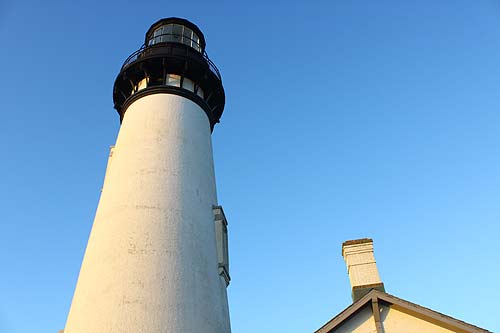
(Oregon Coast) – Note: while this article was published in 2013, it presents a side of Oregon coast weather science that is always relevant, and these conditions often happen at least a few times in winter.
Some striking, even bizarro world sort of weather patterns have been present throughout Oregon lately, and it looks to continue for a while. Inland areas like Portland and Eugene have been absolutely freezing this past week, while the coastline has been almost balmy. In fact, the last few days have been sun-filled and downright gorgeous on the beaches. It's been in the 40's or low 50's during the day with lots of blue sky – but not necessarily in Portland. (Above: Newport in winter)
But it's winter, you say. How can the coast be warmer than the valley?
This kind of weather situation is not uncommon during the winter, but right now it's especially noticeable.
Steve Pierce, President of the Oregon Chapter of the American Meteorological Society, said this is because cold air getting trapped in the valley and can't move into the coastal area. You can expect this to be around for a few more days.
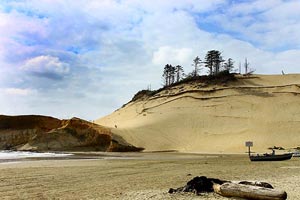 "Many coastal areas have been warmer than the Willamette Valley in recent days due to the temperature inversion that is present in the valley,” Pierce said. “An inversion occurs when cold air is trapped near the ground by a strong ridge of high pressure above. Cold air is heavier and thus more dense, so it sinks into the valley. There is little to no wind present, which means there is nothing to mix the fog out. At the coast, there is enough wind to keep an inversion from forming. This pattern is likely to continue through the weekend and into early next week."
"Many coastal areas have been warmer than the Willamette Valley in recent days due to the temperature inversion that is present in the valley,” Pierce said. “An inversion occurs when cold air is trapped near the ground by a strong ridge of high pressure above. Cold air is heavier and thus more dense, so it sinks into the valley. There is little to no wind present, which means there is nothing to mix the fog out. At the coast, there is enough wind to keep an inversion from forming. This pattern is likely to continue through the weekend and into early next week."
It's not unusual at all for it to be warmer on the coast than inland during big cold spells. This is thanks to the warming influence of the ocean. This happens just about every year in January or February – or both.
Portland meteorologist Rod Hill – currently with KGW-TV Channel 8 – said things can stay colder in the valley because of the east winds bringing colder air. On top of this, the coast range further blocks air dynamics from the east.
“Cold air settles here,” Hill said. “On the coast you don’t get that cold air vection. It’s more moderate because it’s next to the ocean, which is about 50 degrees. So on the coast it can be around 50, 52 or 53 degrees, while in the valley it’s 42 or 44.”
See here for Cannon Beach weather - Seaside weather - Manzanita weather - Oceanside weather - Lincoln City - Newport weather - Yachats weather. See here for general Oregon coast weather.
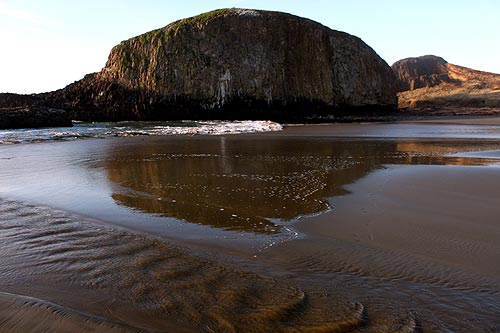
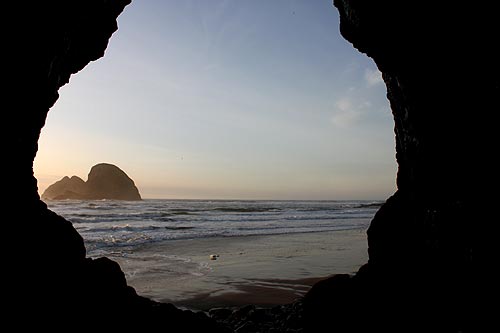
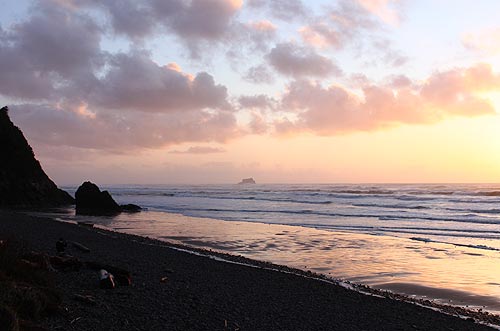


More About Oregon Coast hotels, lodging.....
More About Oregon Coast Restaurants, Dining.....
LATEST Related Oregon Coast Articles
Likely just before dawn best hour but peak happens during daylight. Weather
Dark Sky Week is Prime Along Oregon Coast: Where and Where Not to Go
General guide to dark sky viewing from south to north coast. Astronomy
Sizable Price Drop, Deals in Lincoln City During Quiet of April on Central Or...
20 perc off at A1 Vacation Rentals across its roster, including Gleneden Beach. Lincoln City specials
Upcoming S. Oregon Coast Events Include Gem Show, History: Coos Bay, Bandon
May 6 talk at Coos History Museum, Mayfly Fest May 17, Bandon Rock / Gem Show June 7,8
Washington Coast Cleanup on April 19 - Coinciding with Oregon Coast's SOLVE E...
From the Puget Sound to Long Beach, alongside Oregon's cleanup. Washington coast events, Seaside events
Astoria's Riverwalk Gets New Lighting, More N. Oregon Coast Roadwork
Delays coming this summer, but the riverwalk has a new look. Seaside, Cannn Beach
April Gets Even Cheaper Midweek at Depoe Bay, Lincoln City: Oregon Coast Deals
Off-season rates plus more at Keystone Vacation Rentals. Depoe Bay lodging specials, Lincoln City hotel reviews, Newport hotel reviews
Washington Coast Begins Week of Clam Digs, April 12 Through 18
Long Beach, Twin Harbors, Mocrocks and Copalis at different times. Washington coast events
Back to Oregon Coast
Contact Advertise on BeachConnection.net
All Content, unless otherwise attributed, copyright BeachConnection.net Unauthorized use or publication is not permitted












































